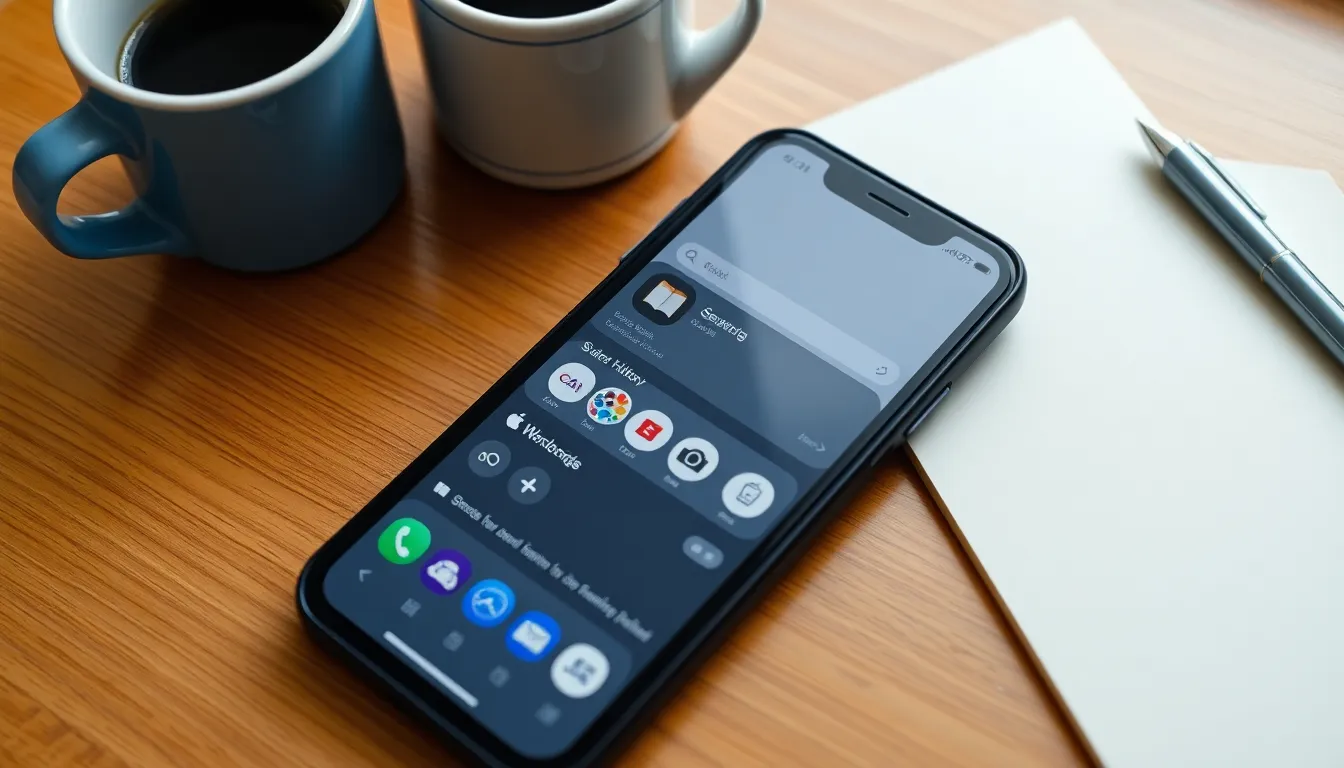Ever found yourself in a situation where you wish you could hit the “delete” button on your browsing history? Whether it’s a late-night online shopping spree or a curious search that you’d rather keep under wraps, knowing how to erase Safari history on an iPhone can save the day— and your dignity.
Table of Contents
ToggleOverview of Safari History
Safari history accumulates data on websites visited, searches performed, and other online activities. Understanding how to manage this history becomes essential for maintaining privacy and enhancing browsing performance.
Importance of Managing Browser History
Managing browser history improves device performance and browsing efficiency. Users benefit from quicker access to frequently visited sites when history is organized. Removing outdated or irrelevant entries can streamline searches and reduce clutter. Regularly clearing history fosters a healthier digital environment, allowing users to focus on relevant content. Keeping the history manageable minimizes distractions and enhances overall user experience.
Potential Privacy Concerns
Potential privacy concerns arise from stored browsing history. Sensitive information may remain accessible, exposing users to unwanted scrutiny. Anyone with access to the device can view past searches, posing a risk to personal privacy. Erasing history prevents unauthorized tracking of online behavior, ensuring a secure browsing experience. Many individuals prefer to delete history after sensitive tasks, such as online shopping or private searches, to protect their personal data. Safeguarding privacy remains crucial in today’s digital landscape.
Step-by-Step Guide to Erase Safari History

Erasing Safari history on an iPhone helps maintain privacy and improves browsing performance. Users can achieve this through the Settings app or directly within the Safari app.
Using Settings App
- Open the Settings app.
- Scroll down and tap on Safari.
- Find and select Clear History and Website Data. This option removes all history stored.
- Confirm the action by tapping Clear History and Data. This step deletes all browsing histories, cookies, and other website data.
Following these steps ensures that browsing history is erased efficiently. Users appreciate how easy it is to navigate the settings for this purpose.
Using Safari App
- Launch the Safari app.
- Tap the book icon at the bottom of the screen.
- Select the clock icon to access browsing history.
- Hit Clear at the bottom right corner of the history list.
- Choose a time frame for deletion: all time, today, or the last hour.
Using this method allows for more selective history management. People often find it convenient for deleting specific entries without removing everything.
Alternative Methods to Clear History
Users can explore additional methods to erase Safari history on an iPhone, enhancing privacy further.
Clearing History via Screen Time
Screen Time offers a way to limit content and manage history. Through this feature, individuals can prevent Safari from keeping a record of websites visited. To initiate this process, access Screen Time in the Settings app. Tapping on “Content & Privacy Restrictions” allows modifications to browser settings. Once restrictions are enabled, users can prevent the History feature in Safari, ensuring no history is saved moving forward. This method is particularly beneficial for parents monitoring their children’s online activity.
Using Third-Party Apps
Various third-party apps provide options for clearing browsing history. These applications often include additional privacy features beyond Safari’s built-in settings. By downloading a reputable app, users can automate the process of deleting browsing data. After installation, settings allow for scheduled deletions, providing ongoing privacy protection. Look for user-friendly interfaces and positive reviews to ensure effectiveness. These tools often enhance overall device security while accommodating specific user needs.
Tips for Preventing Future History Accumulation
Managing Safari history can enhance privacy and browser efficiency. Users can implement strategies to minimize unwanted data accumulation.
Adjusting Safari Settings
Adjusting Safari settings helps control history management. Users can disable the “Frequently Visited” option in Safari to prevent any history from appearing on the start page. Additionally, enabling “Prevent Cross-Site Tracking” reduces tracking from advertisers, limiting the accumulation of history from multiple sources. Another option involves disabling “Show Suggestions” in the search bar, which decreases record-keeping of previous searches. These adjustments promote greater privacy and a streamlined browsing experience.
Utilizing Private Browsing Mode
Utilizing Private Browsing Mode is an effective method for temporary browsing without historical records. When active, this mode does not save browsing history, cookies, or form data. Users can access this feature by tapping and holding the tab button in Safari and selecting “Private.” The browser then displays a black or gray interface, indicating that private mode is enabled. Engaging this mode ensures that sensitive searches remain confidential without cluttering the browser’s history. Frequent use of Private Browsing Mode can significantly enhance online privacy.
Erasing Safari history on an iPhone is crucial for maintaining privacy and enhancing browsing efficiency. By regularly managing browsing data users can protect sensitive information from prying eyes and ensure a smoother online experience. Utilizing the methods discussed allows for tailored control over what to delete whether it’s all history or specific entries.
Incorporating privacy settings and using features like Private Browsing Mode further strengthens online security. Users should feel empowered to take charge of their digital footprint and ensure their browsing habits remain private. With these strategies in place users can confidently navigate the web without the worry of unwanted exposure.



